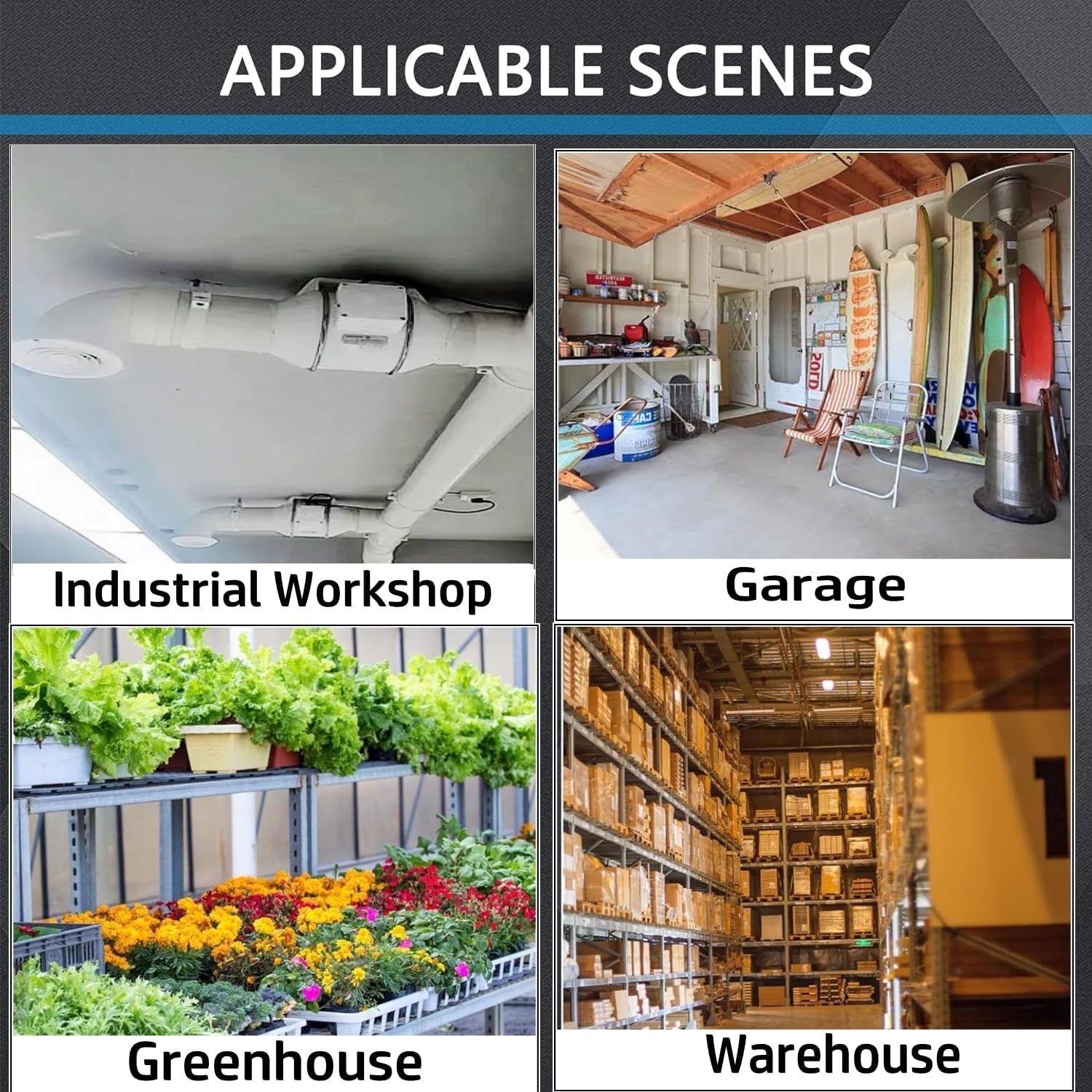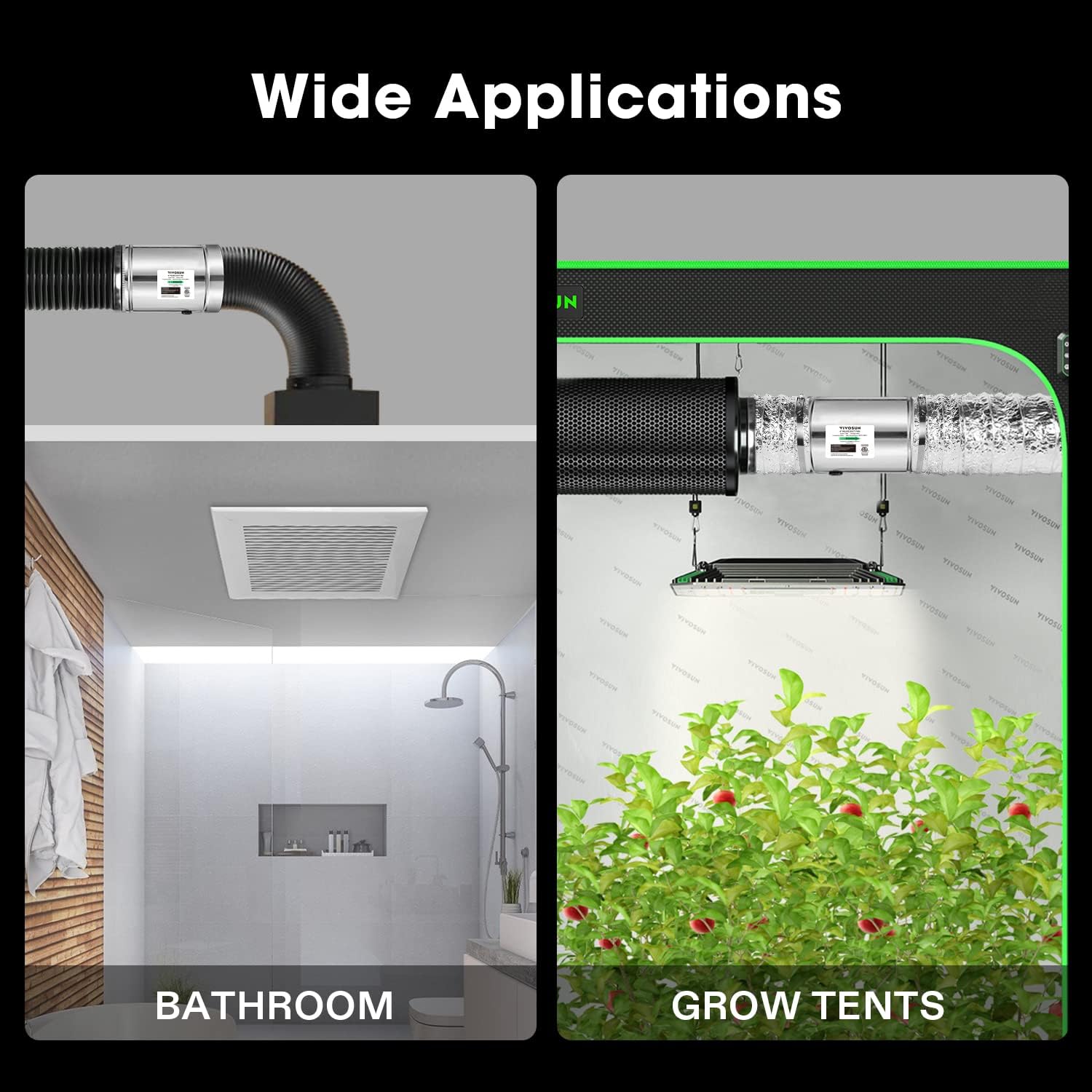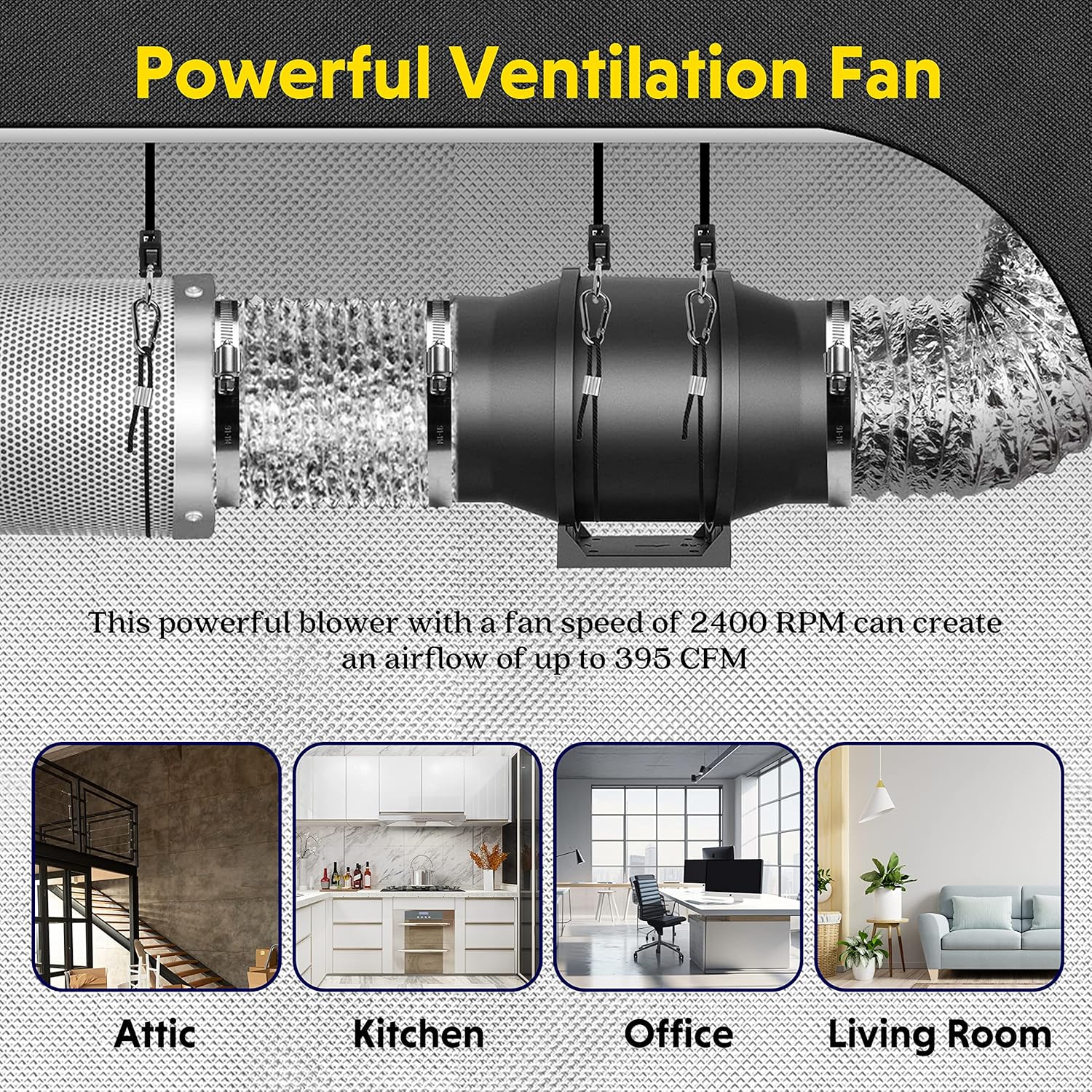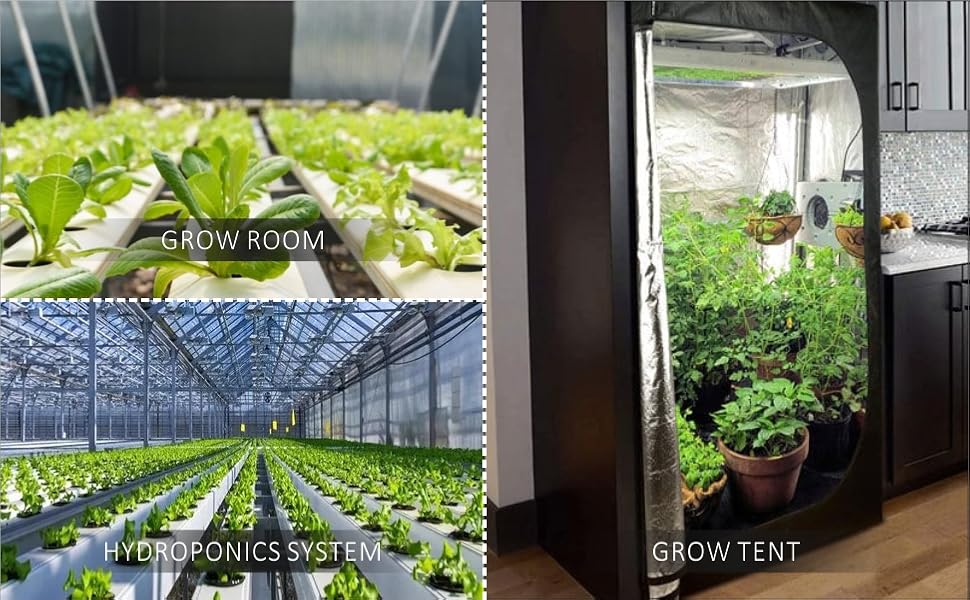An inline duct fan is a crucial component for anyone looking to optimize air circulation within a building, whether for residential, commercial, or industrial purposes. These powerful yet discreet devices are installed directly within ductwork, offering a streamlined solution for enhancing ventilation, controlling temperature, and improving overall air quality. Choosing the right inline duct fan can transform your environment, and understanding their diverse benefits is key to making an informed decision. From ensuring fresh air in your home to managing airflow in complex HVAC systems, these fans are indispensable.
1. Superior Air Movement and Efficiency

One of the primary advantages of an inline duct fan is its ability to deliver significant airflow, often measured in Cubic Feet per Minute (CFM). A high CFM inline fan can effectively move large volumes of air through extensive duct runs, overcoming resistance from bends and filters. This makes them ideal for applications requiring robust ventilation, such as large commercial spaces or industrial settings. Modern designs often incorporate mixed-flow technology, combining axial and centrifugal principles to achieve high airflow and pressure rates efficiently. This means you don't have to compromise on performance, even in challenging ventilation setups. An inline blower fan with these characteristics ensures that air is effectively exhausted or supplied, contributing to better air quality and comfort.
2. Whisper-Quiet Operation for Undisturbed Environments
A major concern with any ventilation system is noise. Thankfully, many contemporary inline duct fans are engineered for remarkably quiet operation. A quiet inline duct fan is particularly beneficial in noise-sensitive environments like homes, offices, recording studios, or libraries. Manufacturers achieve this through advanced motor technology, aerodynamic blade design, and robust casings that minimize vibration. The focus on silent efficiency makes them a preferred choice over louder, more obtrusive ventilation methods, ensuring that your space remains tranquil even while the fan is operating at peak performance.
3. Robust Construction and Long-Lasting Durability
Investing in an inline ventilation fan means expecting reliability and longevity. High-quality models are typically constructed from durable, high-grade materials such as robust ABS plastic or metal, designed to withstand the rigors of continuous operation. This includes resistance to wear, corrosion, and environmental impacts like humidity, which is crucial for applications in bathrooms, kitchens, or greenhouses. Features like stainless steel secure clamping rings and sturdy casings not only enhance durability but also simplify servicing and cleaning, extending the fan's operational lifespan. Choosing a well-built fan ensures peace of mind and a lasting solution for your ventilation needs.
4. Versatility Unleashed: Applications Across Spaces
The adaptability of these fans is one of their most compelling features. They are not limited to a single purpose but can be integrated into various systems. For instance, an inline exhaust fan is perfect for removing stale air, odors, and moisture from bathrooms, kitchens, and grow rooms. In larger buildings, a duct fan for HVAC systems plays a vital role in distributing conditioned air efficiently and maintaining balanced temperatures. Commercial inline duct fans are designed to handle the demands of businesses, from retail spaces to workshops, ensuring a comfortable and healthy environment for employees and customers alike. This versatility makes them an essential tool for air quality management across diverse settings.
5. Simplified Installation and Electrical Integration
Modern duct fans are designed with the installer and user in mind. Many models feature user-friendly wiring instructions, often marked directly on the product, and protected electrical junction boxes for safe and secure power management. An electrical inline duct fan often comes with integrated mounting brackets or bases, allowing for quick and hassle-free installation within various duct configurations, whether new or existing. The compact, cylindrical profile of these fans also makes them ideal for concealed installations where space is at a premium. This ease of setup, combined with straightforward maintenance access, reduces installation time and long-term operational complexities.
6. Smart Design for Optimal Performance and Control
Beyond raw power, today's duct fans incorporate smart design features that enhance their functionality and user control. Many units offer multi-speed functionality, allowing users to adjust airflow based on specific requirements – from high-performance boosts to energy-efficient, lower-speed operation. This adaptability ensures that you only use the energy needed for the task at hand. The streamlined and compact designs not only facilitate easier installation in tight spaces but also contribute to aerodynamic efficiency, minimizing turbulence and maximizing airflow. These thoughtful design elements underscore the evolution of these fans into sophisticated air management solutions.
In conclusion, selecting the right unit can significantly enhance your indoor environment, offering a blend of power, quietness, durability, and versatility. Whether you need an inline exhaust fan for moisture control, a high CFM inline fan for industrial ventilation, or a quiet inline duct fan for your home, there's a solution designed to meet your specific needs. Companies committed to innovative electrical products ensure that a comprehensive range of such solutions is available, catering to diverse customers from wholesalers to retail buyers. By understanding these key benefits, you can confidently choose an inline duct fan that will deliver reliable performance and improve air quality for years to come.




